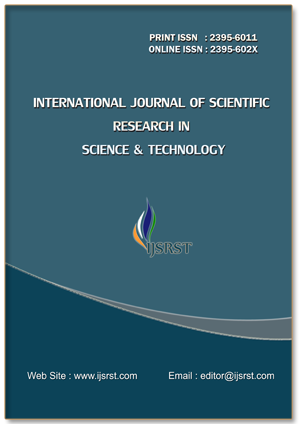Dose Distribution Three-Dimensional Conformal Radiation Therapy (3DCRT) With 2 And 4 Directions in Treatment Planning System for Cervical Cancer Cases
DOI:
https://doi.org/10.32628/IJSRST2411352Keywords:
Cervical Cancer, 3DCRT, Anterior – Posterior, Conformity Index, Homogenity IndexAbstract
Cervical cancer which attacks the cervix is triggered by a virus called human papilloma virus (HPV). One effective treatment method for cervical cancer is external radiotherapy using a Linear Accelerator (Linac). This research aims to obtain radiation dose distribution by comparing the effectiveness of two treatment techniques cervical cancer, through Conformity Index (CI), Homogenity Index (HI), and radiation protection against Organ at Risk (OAR) in accordance with QUANTEC rules. The techniques used is Three Dimensional Conformal Radiation Therapy (3DCRT) with 2 directions of irradiation (anterior – posterior) and 4 directions of irradiation (box). Research data was obtained from 15 images of cervical cancer patients who have contoured by a Radiation Onkology Doctor at Indriati Hospital Solo Baru. From the result of the research, it can be said that the 3DCRT technique with 4 directions It can be seen from a higher Conformity Index (CI) value indicating a better level of conformity, and a lower Homogenity Index (HI) value indicating a higher level of homogenity. In addition, the 3DCRT technique with 4 directions of irradiation is also considered more effective in protecting OAR compared to 2 directions of irradiation.
Downloads
References
Global Cancer Statistics. 2020. GLOBOCAN Estimates of Incidence and Mortality Worldwide for 36 Cancers in 185 Countries. A Cancer Journal for Clinicians, 71(3), 209–249. DOI: https://doi.org/10.3322/caac.21660
Kementerian Kesehatan RI. 2020. Profil Kesehatan Indonesia 2020. Jakarta: Kementrian Kesehatan RI.
WHO, dan IAEA. 1972. The Medical Uses of Ionizing Radiation and Radioisotopes: Report of a Joint IAEA/WHO Expert Committee. International Journal of Radiation Biology and Related Studies in Physics, Chemistry and Medicine, 22(3), 308. DOI: https://doi.org/10.1080/09553007214551131
Susworo, R., dan Kodrat H., 2017. Dasar Dasar Radioterapi Tata Laksana Radioterapi Penyakit Kanker Edisi II. Jakarta : UI Press.
Lomax, M. E., Folkes, L. K., dan O. Neill P. 2013. Biological Consequences of Radiationinduced DNA Damage: Relevance to Radiotherapy. Journal of Clinical Oncology, 25(10), 578-585. DOI: https://doi.org/10.1016/j.clon.2013.06.007
Bentel, W. P. 1996. Radiation Treatment Planning. Canada: McGraw-Hill.
Podgorsak, E.B. 2005. Radiation Oncology Physics: A Handbook for Teachers and Students. Vienna: IAEA.
Khan, F. M. 2003. The physics of radiation therapy (3rd ed). Philadelphia: Lippincott Williams and Wilkins.
ICRU. 1999. ICRU Report 62 Prescribing, Recording and Reporting Photon Beam Therapy (Supplement to ICRU Report 50). Washington: International Commission on Radiation Units and Measurements.
Daniartie, Y. E., Wardani, P. S., Putri, D. R. P. S., Stevenly, R. J., dan Suryaningsih, S. 2020. Analisis Treatment Planning System dengan Menggunakan Teknik Box dan Teknik Antero Posterior-Postero Anterior pada Kasus Kanker Serviks. Progressive Physics Journal, 3(1), 118. DOI: https://doi.org/10.30872/ppj.v3i1.873
ICRU. 1993. Prescribing, Recording, and Reporting Photon Beam Therapy, ICRU Report 50. Washington: International Commission on Radiation Units and Measurements.
Tyagi, A., Supe, S., Sandeep., Singh M. P. 2010. A Dosimetric Analysis of 6 MV Versus 15 MV Photon Energy Plans for Intensity Modulated Radiation Therapy (IMRT) of Carcinoma of Cervix. Reports of Practical Oncology and Radiotherapy, 15(5), 125-131. DOI: https://doi.org/10.1016/j.rpor.2010.08.002
Setyawan, A., dan Djakaria, H. M. 2014. Efek Dasar Radiasi Pada Jaringan. Jakarta : Universitas Indonesia.
Feuvret L, Noel G, Mazeron JJ, Bey P. 2006. Conformity index- a review. Int J Radiat Oncol Biol Phys, 64:333–42. DOI: https://doi.org/10.1016/j.ijrobp.2005.09.028
Yoon M, Park S Y, Shin D, Lee S B, Pyo H R, Kim D Y, and Cho K H. 2007. A new homogeneity index based on statistical analysis of the dose volume histogram. Journal of Applied Clinical Medical Physics.Vol 8, No 2. DOI: https://doi.org/10.1120/jacmp.v8i2.2390
Yan, L., Xu, Y., Chen, X., Xie, X., Liang, B., dan Dai, J. 2019. A new homogeneity index definition for evaluation of radiotherapy plans. Journal of Applied Clinical Medical Physics, 20(11), 50–56. DOI: https://doi.org/10.1002/acm2.12739
Kataria T, Sharma K, Subramani V, Karrthick K. P. and Bisht S S. 2012. Homogeneity Index: An objective tool for assessment of conformal radiation treatments. J Med Phys.; 37(4): 207–213 DOI: https://doi.org/10.4103/0971-6203.103606
Grosu, A. L., Sprague, L. D., dan Molls, M. 2023. Definition of Target Volume and Organs at Risk. Biological Target Volume. Medical Radiology, 167- 177. DOI: https://doi.org/10.1007/3-540-29999-8_13
Fawaz S.Z, Kazandjian S,. 2018. “What Is the Optimal Radiation Technique for Esophageal Cancer? A Dosimetric Comparison of Four Techniques”. Journal of Radiation Oncology, 10(7), 11-13. DOI: https://doi.org/10.7759/cureus.2985
Downloads
Published
Issue
Section
License
Copyright (c) 2024 International Journal of Scientific Research in Science and Technology

This work is licensed under a Creative Commons Attribution 4.0 International License.
https://creativecommons.org/licenses/by/4.0





